
Tulalip continues to have community upticks in COVID

syəcəb

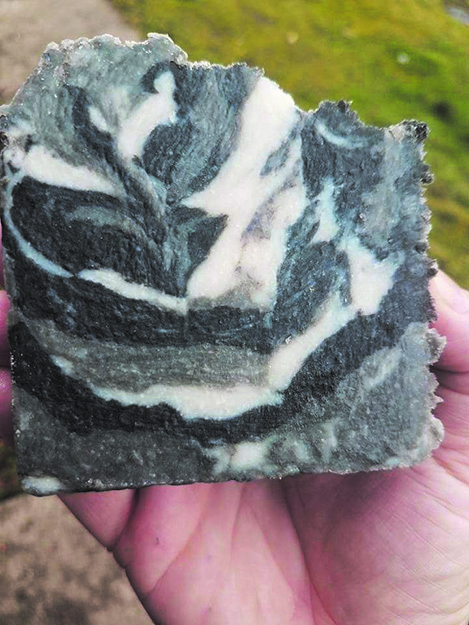
By Kalvin Valdillez, Tulalip News
“Everybody sees soap as this magical thing, and it is kind of magical,” said Tulalip tribal member, Amoreena Anderson. “It cleanses your pores and takes away all the dirt and bacteria off your body, binds it to a molecule and washes it away.”
At a young age, Amoreena found her passion while on shopping trips with her mom in Mount Vernon. Little did she know of all the lives she would positively affect when she was drawn to a section of a local food co-op where they sold handcrafted soap, and her teenage, curious mind began to wonder how soap is made.
“My mom used to take me to the Skagit Valley Food Co-Op and they would have all these handcrafted soaps, I was always interested in knowing how they were made,” she said. “My mom told me she made soap before and I would probably learn when I got older. From that moment on, I was completely into it.”
She spent the next few years researching how to craft soap. If the co-op visits were the prelude to her journey in soap making, the first chapter took place in 2012 when she began experimenting and created her first product, which was a big hit amongst her family and co-workers.
She stated, “I have carpal tunnel and was always typing as a data entry clerk, so I started making shea butter body whip, basically whipped shea butter that I would add essential oils and vitamin E. My friend used to trade me massages for the body butter, it was for her child who had a skin condition. I believe all the high-end essential oils are wonderful, they reap all the benefits that you could use and I really wanted to know more.”
Amoreena explained that after receiving positive reviews about the body butter and learning more about essential oils, she was ready for the next challenge. Purchasing her first home in 2013, she now had the necessary space to fully immerse herself into her passion project.
“I had a typical first timer experience as I started perfecting my methods and recipes. They have soap calculators online that are very helpful in helping you get the right consistency. Cleansing and moisturizing are the two most important factors. Depending on your skin type, you can modify each batch to meet your specific needs. And then there’s also the oil properties; soy bean, coconut, shea butter, a lot of exotic oils that all have different properties. Pretty soon I had a lot of people who wanted to buy soap from me, so I start selling soap. But, I wanted to do more.”

“I had a typical first timer experience as I started perfecting my methods and recipes. They have soap calculators online that are very helpful in helping you get the right consistency. Cleansing and moisturizing are the two most important factors. Depending on your skin type, you can modify each batch to meet your specific needs. And then there’s also the oil properties; soy bean, coconut, shea butter, a lot of exotic oils that all have different properties. Pretty soon I had a lot of people who wanted to buy soap from me, so I start selling soap. But, I wanted to do more.”
Growing up Tulalip, she learned about the traditional lifeways of her people and knew a great deal about harvesting and the medicinal properties that plants contain. She wanted to expand her knowledge on the subject of herbalism even more to incorporate different plants and herbs into her soaps, salves, candles, bath bombs, and lotions to help people with their everyday ailments. She enrolled in an herbalist course to get a better understanding of the healing abilities that various plants offer.
“I took a class to learn different ways I could incorporate a holistic approach, to help people heal their skin issues and symptoms because a lot of herbalism can treat those symptoms,” said Amoreena. “Depending on the plant you’re using, some of these plants are adaptogenic and they alleviate and eliminate symptoms completely. I really feel like I’m doing my best work, sharing my passion for my work in general to give to my community. Whether it be information or product, it’s very empowering and uplifting and I like to not only give to them, but ask them if they would like to make soap with me, if they want to go harvesting with me, or if they want to sit in and watch.”
Amoreena’s soap making journey was off to a great start. In fact, if her story was a biopic on the silver screen, the next few years would play out like a montage as her business, known officially as Coast Salish Soaps, took off. Not only was she selling soap to multiple families within the Tulalip community, her products were being shipped nationwide and could even be found for sale in other countries such as Canada, Italy, Japan, Germany and England. The quality of her products was spoken of highly by her clientele who provided testimonials and side-by-side before and after pictures to back up their reviews.
A major component to her success is the fact the she shares her knowledge with her consumers. When people approach her with different skin issues they wish to address, she not provides them with a product that works, she explains why it will work, what to expect and how the issue may have arisen in the first place.
“I really do care,” expressed Amoreena. “I have sensitive skin. My kids have sensitive skin. A lot of it stems from the food you eat. Your liver is basically your body’s second brain, and your skin is the largest organ on your body. Your skin is considered to be your second liver. Everything your liver doesn’t process out, comes through the skin and you end up having skin eruptions; eczema, cirrhosis, endocrine diseases are linked to the liver and heavy metal. There are so many people who suffer from skin flare ups like dry skin, rashes and they don’t know where it comes from.”
She continues, “When you go all natural with handcrafted soaps like I make, sometimes you go through a detoxing process for your skin and it’s weird for the first two weeks, but then you’re all good. A lot of people say soap irritates their skin and think what is sold over the counter is soap, when it’s not actually soap, it’s chemicals. People like it because it doesn’t leave soap scum, one of the complaints that happens regularly with handmade soaps. But then they’ll notice their skin is a lot drier, itchier, and tight-feeling, and that’s because their using surfactants versus soap. With what corporate America gives the public to use, small-business-handcrafted-soap-makers are really valuable people inside their communities, to bring that knowledge back to people. It’s empowering for a lot of people to take back control on what they use on their bodies.”
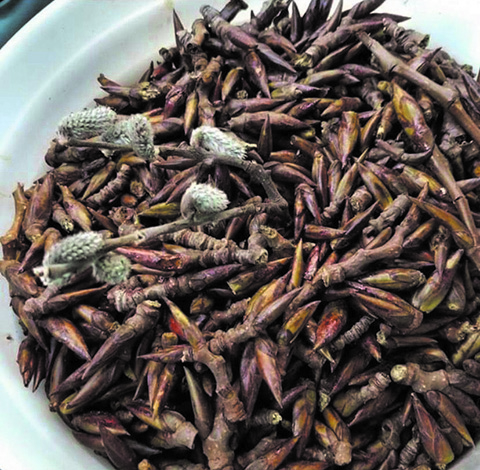
All great success stories are not complete without trials and tribulations, and Coast Salish Soaps are currently weathering a momentary hiatus brought forth in the form of an injury when Amoreena took a spill and broke both of her wrists. Although she hasn’t been in business for about a year, she still receives requests on the regular. When she has the necessary helping hands from her kiddos and plenty of notice in advance, Amoreena will occasionally concoct a batch of soaps to donate for local memorials and funerals in the Tulalip community.
“I usually have a feeling of gratitude when I do my work. When I’m called upon to make soap for memorials, or funerals for our give away practices, I always try to oblige. An important part of our culture, in the potlatch system, is our giveaways.”
Amoreena wants her loyal customers and interested parties to know that her love and passion for soap making hasn’t faltered through trying times, and that she plans on elevating her brand once she is back to 100% and healed from her injury. And although she constantly works with Native plants of this region, such as Devils Club, and has even rendered bear fat to use in her products, she wants to incorporate more traditional teachings and medicine into soaps and creations.
“One of my favorites to make is the emulsified sugar scrub because you’re in total and complete control of how moisturizing or cleansing it is, and how silky it’s going to turn out and how much lather it will have. My healing butter infused with plant medicine is another favorite. Soap is my favorite, that’s a given because that’s the base of my business. I like to make lotions and heavy creams upon request. Liquid soap is most definitely up there, people really like the liquid soap. My son’s out fishing and he’ll come home and it will take the fish smell right out of his skin. Any stinky smell, it’s just gone, don’t have to re-wash your hands from anything potent smelling. It’s really good for your skin too, it doesn’t leave it over dried.”
To stay updated on the latest news about Amoreena and Coast Salish Soaps, please join the Coast Salish Soaps group on Facebook and be sure to give their business page a like as well. Amoreena may not be selling products at this time, but she is always willing to share the knowledge she has attained over the years with those who are inquiring.
She expressed, “My goal with my business is to empower the people, to give back to the community. It’s important that we uplift each other and share our knowledge to keep our Tribe and our community empowered. You’d be amazed at what a bag of liquid soap, that’s full of essential oils, can do for somebody’s mental health just by that ritual of showering and inhaling the essential oils in the steam.”
Did you know?
By Kalvin Valdillez, Tulalip News

The film festival lives on! With each year that passed since the Hibulb Cultural Center (HCC) first announced the Film Festival, more and more participants found community by bonding with other likeminded creatives at the yearly Fall time event. Each year the film festival culture grows stronger as Indigenous filmmakers, actors, and storytellers showcase their art to the public. The festival is open to all who work in film, whether you live locally or a few states or continents away, everyone is encouraged to take part in the festival and several filmmakers, scorers and screenplay writers from around the world submit their works each year.
“The film festivals began at Hibulb to celebrate films and filmmaking, and to highlight Coast Salish communities as well as communities around the world and the values that we share,” explains Lena Jones, HCC Education Curator and Film Festival Organizer. “There is always an international element to our festivals that remind us of the beauty of the world.”
In years past, the event typically occurs throughout the course of an entire day and movie lovers are treated to multiple screenings in both the HCC classrooms and longhouse. The participants who submit their films provide an introduction before the film plays and afterwards, they explain in detail the intricacies of each scene and answer any questions from the audience, allowing the creatives to fully engage about all the specifics that go into making a film.
Lena expressed, “We believe it is important to celebrate Indigenous filmmakers and actors because they carry our voice and perspective into the world, a perspective that is much needed during these times. They provide role models for our younger generation with their strong, healing messages. They uplift their communities. We know there is so much talent in our communities and so much knowledge to draw from in our heritage.”
With local events throughout the nation being pushed-back or canceled completely due to the coronavirus, it is refreshing and exciting to see the continuation of the film festival, especially since last year’s event drew many spectators and submissions. And although the HCC is open to the public, with many safety measures and practices in place, they are taking an extra-cautious approach to this year’s festival because of the infectious disease and are proceeding with the event digitally.
“The show must go on,” said Lena. “This year the festival will be virtual. We will livestream the film awards and lifetime achievement awards on our Hibulb Cultural Center Facebook page at noon on November 7, and we will post links of the films for folks to view. An audience award will be given this year on the film selected by the audience as the overall best film.”
Over the past eight years, the festival has welcomed several genres of films such as music videos about rez love, fantasy films, documentaries about local tribes and their people. Local cinephiles are often treated to a look into tribal lifeways when films regarding sovereignty, treaty rights, harvesting, and art are shared during the festival.
Some films feature songs and on-screen interactions that are spoken and sang in the filmmaker’s Native language, such as fan favorite films by Tulalip Filmmaker, David Spencer Sr., Waiting for Blackberries and I Am Frog in which the film’s dialogues are spoken entirely in Lushootseed.
“The films are diverse. Each year we pick a theme for the festival,” said Lena. “This year is ‘Past, Present, and Future’. Our judges, Swinomish tribal elder and filmmaker Robin Carneen, filmmaker Mike Van Luvan, and chef and film consultant Brit Reed all bring unique and inspiring perspectives to our film festival. We’re honored for their help and expertise.
“We accept all films. In the past we’ve received historical and biographical documentaries, animations, romance, fantasies, thriller films, action films, comedies, music films, experimental films, and sci-fi films.”
So far, the HCC has received five film submissions including, Bittersweet Life as We Know It by Julie Antony, Nobody Cares by Tim Fraser-Granados, Salish Cedar Canoes by Costa Boutsikaris, The Battle of Blythe by Robert Lundahl, and The Vision, Death, and Ghost of Isaac Ebey by Jefferson Elliot. The Film Festival will continue accepting submissions throughout the month of October as they gear-upfor the 8th Annual Hibulb Cultural Center Film live on Facebook, November 7th.
“It is important for the festival to continue,” Lena stated. “There’s so much history, heritage, diversity, and beauty in our communities. Our cultures and values are medicine to our communities. This is one way to keep spreading the wisdom and highlighting the ideals of our ancestors. We would be happy to receive more entries for our festival. The entry form can be found on our Hibulb Cultural Center website, Film Festival 2020, https://www.hibulbculturalcenter.org/Events/Film-Festival-2020/. Then e-mail me the form along with a link to your film. My e-mail address is lejones@hibulbculturalcenter.org.”
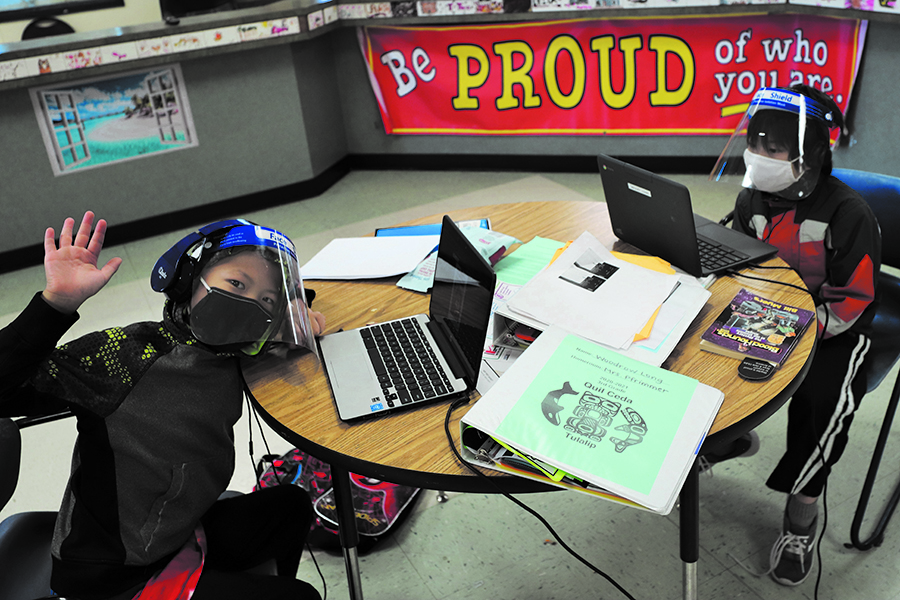
By Micheal Rios, Tulalip News
Washington State is home to over one million public school students. According to the Seattle Times, 94.4% of these students have begun the 2020-2021 school year not in the classroom nor with any in-person interactions with their devoted teachers. Instead, nearly all of Washington’s public school districts have gone all-in with a virtual teaching concept designed to minimize spread of coronavirus – Distance Learning.
Defined as any form of remote education where the student is not physically present for the lesson, distance learning is the default safety net for education in the age of COVID. Thanks largely to the power of the internet, educators are able to teach their carefully crafted lesson plans via a computer screen and video cam to their young learners. This type of learning comes with one major flaw; it’s completely dependent on the students having the access and know-how to operate today’s tech gadgetry and ever-updating software and apps.
Welcome to 2020, where the kingdom of social distancing reigns supreme and access to ample bandwidth is the difference between a student achieving and being irritably stuck on a frozen Zoom screen.
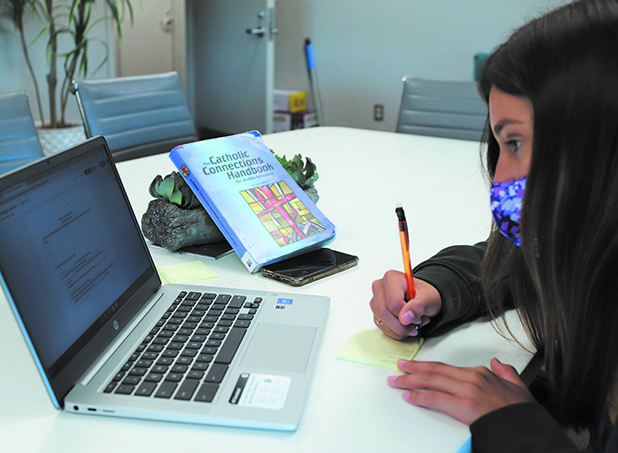
Fortunately for Tulalip’s K-12 students, they belong to a Tribe who had the foresight to transform the reservation’s largest two youth activity centers into dedicated distance learning sites. In the weeks leading up to the new school year, the Tulalip Teen Center and Boys & Girls Club received critical network upgrades to ensure a high-demand of bandwidth could be sustained, turned typical activity and gaming rooms into spaces that encourage learning, and instituted COVID guidelines such as temperature checks, mask enforcement, and social distancing.
“The health, education and overall success of our students is our top priority. The Tulalip Education Division and the Tulalip Boys & Girls Club are working hard to provide support in the safest environment possible,” stated Jessica Bustad, executive director of education. “Together we can ensure that our students begin thriving during these uncertain times. We wrapped up our second full week of Distance Learning and are improving services provided to our students. We are very proud of our young people who are showing up and doing the best they can.”
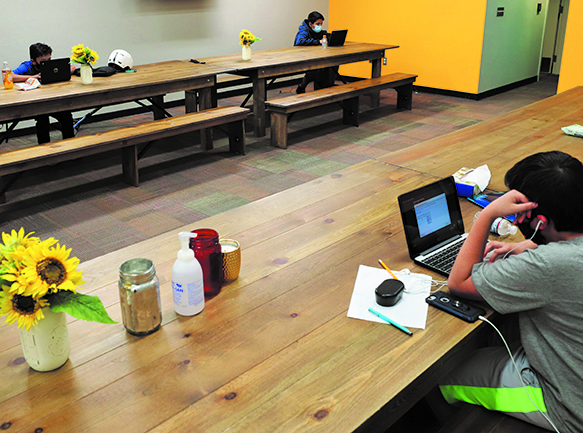
Change can come into our lives as a result of crisis, as a result of choice or just by chance. Being unprepared and resistant to change leads to fear, hostility and a sense of hopelessness. Embracing change and managing all its challenges in a constructive way is key to not only surviving, but thriving in an ever-changing world.
Adapting to change is what the devoted staff of both distance learning sites and the many young minds who attend on a daily basis exemplify. Primarily accommodating Kindergarten – 5th grade students who require much more attention and emotional reassuring, the usual Boys & Girls Club activities specialists are now de facto educators.
“We are no longer a traditional boys and girls club. We’ve become a school-like learning center,” said Diane Prouty, administrative assistant for the Club. “We have 98 kids registered and average about 70 kids per day. We separate them by grade level, so 1st graders are together, 2nd graders are together and so on.
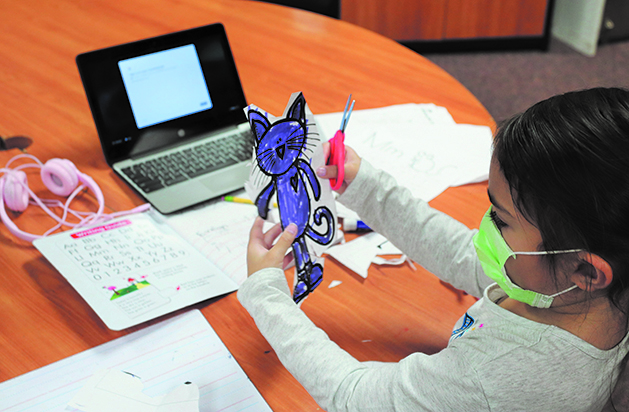
“As a staff, we feel so needed. We’re all learning to navigate this unprecedented time together,” she continued. “We have five different elementary schools represented among our K-5 kids. We do our best to keep up with each student’s daily responsibilities, but there are so few of us and so many of them. It can be overwhelming at times because we know some kids require more one-on-one time, but we have to use our time effectively to do the most good. At the end of the day, we are making a huge impact by creating a safe place for our community’s kids to learn.”
Adapting to the new tech-centric normal is easier for teens who willingly spend much of their free time with their eyes glued to screens anyway, whether it be a computer, TV, cell phone, tablet or video game. A big obstacle for them is less familiarity with Chromebooks and virtual learning programs and more access to a consistent internet connection. Within the rezzy landscape of Tulalip, stable internet and adequate bandwidth can be difficult to come by under the best of conditions.
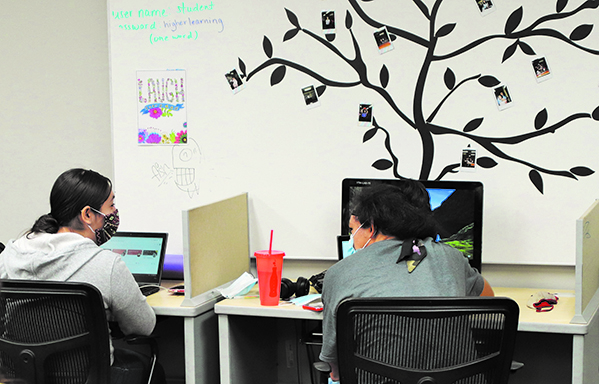
Network upgrades and additional Wi-Fi hot spots at the Teen Center make it a quality alternative for homebound teenagers looking to focus on their school work. Plus, there is support offered by both peers and staff, many of whom are recent graduates of the same Marysville School District curriculum.
“It’s been pretty cool because there are people here to guide us with our school work when we’re confused and have questions,” shared 9th grader Image Enick. “For those with working parents, there is no one at home to assist with assignments, but here at the Teen Center there are plenty of people we are comfortable with asking questions. I haven’t had any difficulty with my online classes or getting kicked off because of bad internet either.”
“We are so proud of the kids here,” added tribal advocate Courtney Jefferson. “We’ve been averaging 40 to 60 a day. They have been taking the initiative to prioritize their education and haven’t needed to be redirected to engage in their online classes. They’ve been getting themselves into their learning spaces, taking ownership of their rooms here in the building, and being productive with their time.”
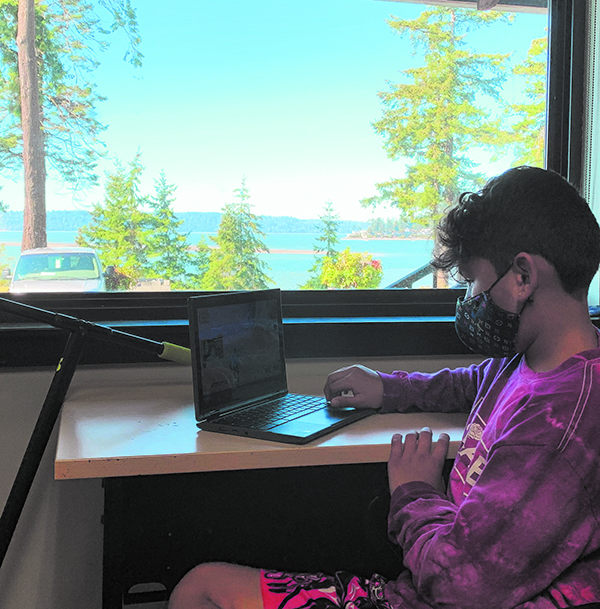
The Tulalip distance learning sites continue to adapt and find creative ways to provide additional support to our students. Both locations are a safe space for students to access the internet, connect to WI-FI, or use a desktop. They each provide daily meals as well. Most importantly, the sites allow students to build a routine, with consistent support and resources that effectively promote scholastic achievement.
The Tulalip Education staff are also available to provide support and resources to students who are not currently attending the facilities. Feel free to contact any of the programs if you have additional questions:
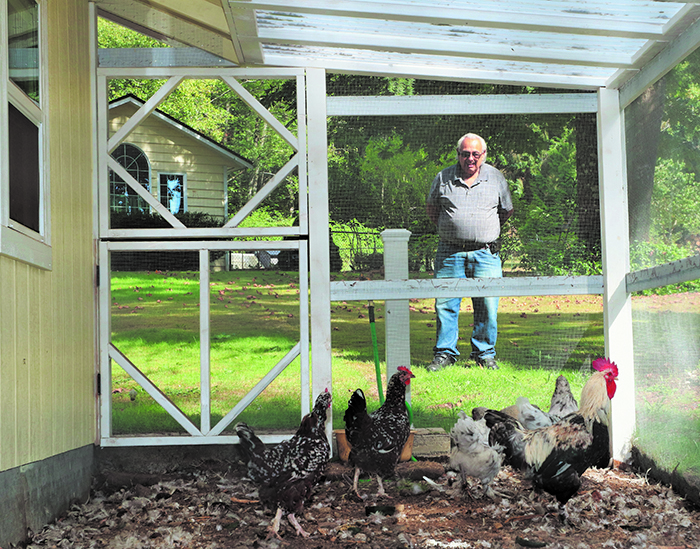
By Micheal Rios, Tulalip News
Earlier this summer, Tulalip elder Terry Parker Sr. was sitting on his front porch when inspiration struck. He thought to himself how wonderful it would be if his beloved chickens had an area to themselves in the front yard, with a clear line of sight from the porch.
“I called my son Torry who operates a construction maintenance company and let him know of my idea,” recalled Terry. “He said he had a young Tulalip man in mind, and that this would be a good solo project for him.”
The young man was Gerald Williams. A recent graduate of TERO Vocational Training Center, he was eager to further develop his construction skills while demonstrating everything he learned under the tutelage of TVTC instructors.
“Gerald came to my house and we talked about the design and specific dimensions I had in mind for the coop. He was quick to grasp my idea and make it into a reality,” said Terry.
And so Gerald got to work. Nearly two months of hard sweat and labor under the summer sun later, he completed a pretty elaborate coop for the Mr. Parker’s chickens. Complete with ample storage space, outdoor range for the chickens to stretch their feathers, and a running water spigot.
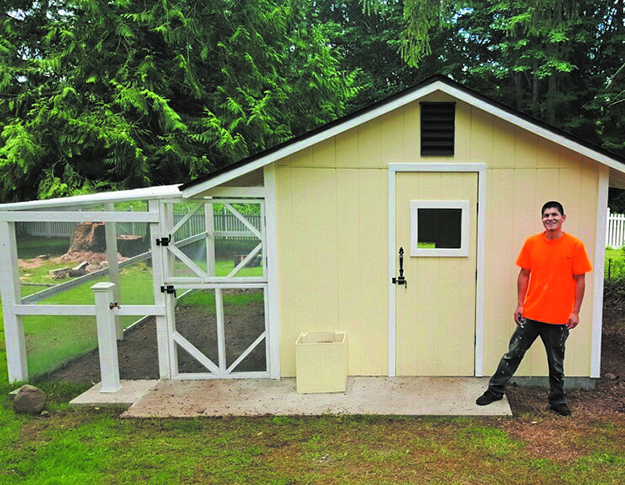
After painting his completed project a nice mellow yellow color, Gerald beamed with pride when Terry took in the finished product a few weeks ago.
“It’s exactly what I wanted. The quality is top notch and made to withstand our Washington weather,” Terry said from his front porch while admiring his new chicken coop. “Gerald is just a fantastic person. Doesn’t talk too much, just gets down to work every day and does his best.”
At 74-years-old, Terry thoroughly enjoys keeping chickens. They give him a daily routine to adhere to and now being able to watch them from his front porch, they bring additional peace of mind. The relationship is healing as well. Terry takes great care of his chickens, giving them an eye-catching living environment and good feed so they’ll lay many eggs.
“Their eggs are medicine. With my diabetes, eating eggs everyday helps keep my blood sugar down and [improves insulin sensitivity],” explained Terry. “Keeping chickens is something my wife and I enjoy very much. We can’t thank Gerald enough for building us this amazing coop. My hands go up to him.”
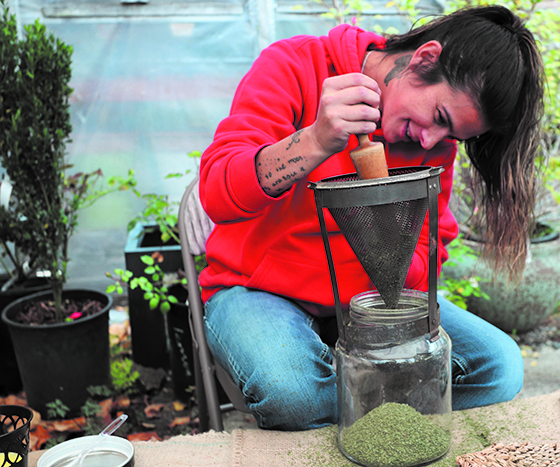
By Micheal Rios, Tulalip News
Herbal medicine is one of the oldest teachings we have. Human beings have supported holistic health and wellness with the use of plants and herbs that naturally work synergistically with our minds, bodies, and spirits since the dawn of time. What could be a more amazing way to support your optimal well-being than by using nature’s gifts?
“This is what is so wonderful about herbal nutrition and using plants in a culturally appropriate and traditional way to support our wellness,” marveled Veronica “Roni” Leahy, Diabetes Care and Prevention Program coordinator at the Tulalip Health Clinic. Her dedicated team hosted several plant-based craft making tables at Garden Treasurers organic farm on Wednesday, September 16. “This is such a precious opportunity to talk about plants and how important they are for the overall health of our bodies. This work truly is making an impact on preventing diabetes and other chronic diseases.”

Our bodies were designed to exist with nature, which is why it should come as no surprise that herbal medicine continues to be an effective way to support wellness. For countless generations, we’ve incorporated herbs into our food culture and used them foundationally to create medicines to remedy the most common ailments. Whether you realize it or not, plants have a deep-rooted effect on the way we feel, both physically and spiritually. We quite literally feel better and get an energy boost by simply allowing ourselves to be immersed by plant power. It’s the way nature intended.
For Tulalip families and health clinic patients who ventured to Garden Treasures and took advantage of September 16’s u-pick garden day, they were treated with an opportunity to learn about plant-based crafting. Think of it as chicken soup for the soul, but instead of chicken soup its locally grown lavender, lemongrass and berry blends.
Amy King brought her two daughters, Kimberly and Grace, to the hands-on event to learn more about healthier food options and was pleasantly surprised to see the craft tables. After making their rounds through the farm and picking a wide-range of fresh produce, they took a seat and got to work making bundles of dry lavender.
“It was a little difficult because I’ve never made one before, but it was fun learning. I want to hang mine by my bed or put it next to my pillow,” said 12-year-old Grace.
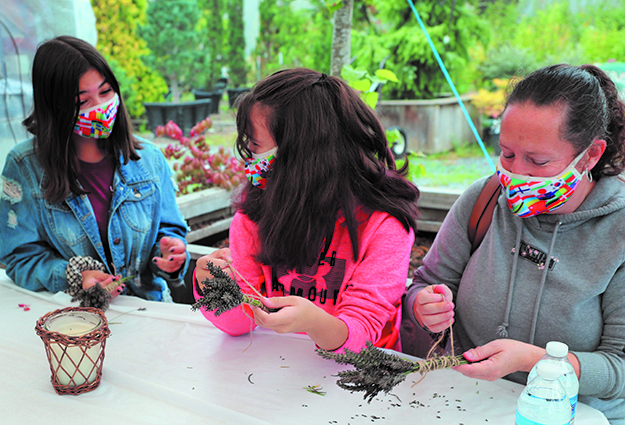
Lavender is a flowering plant in the mint family that’s easily identified by its sweet floral scent and stunning shade of purple. It’s commonly used for medicinal and therapeutic benefits, namely to improve sleep and reduce blood pressure. Lavender is also a great natural remedy for everyday stresses that can take a toll on your mental health. There’s plenty of research that suggests the purple herb has positive effects on mood, stress, anxiety and depression.
As an aspiring chef, 15-year-old Kimberly felt her mood become more and more joyous as she finished her lavender bundle and began looking forward to some creative cooking with all her garden harvesting.
“The cooking process is more fun when you can handpick your own ingredients,” she said. “Getting fruits, vegetables, and herbs straight from the garden means you’re cooking with the freshest ingredients and making healthier meals. Walking through the gardens and seeing all the different options, it’s easy to think creatively and get a lot of ideas. I plan on experimenting with what I picked today and making a chicken stir-fry.”
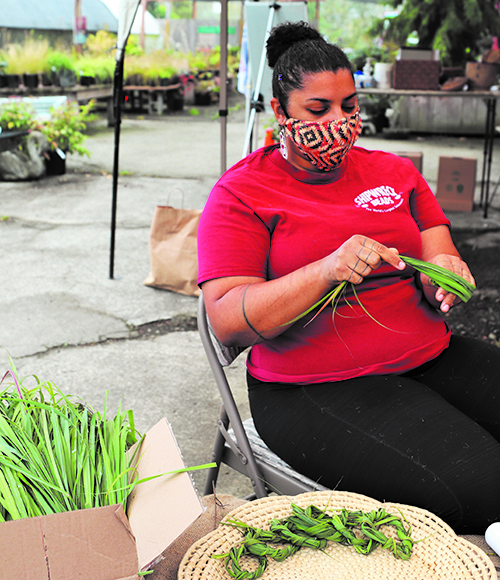
With the summer season officially over and Pacific Northwest temperatures already in the mid-60s, we’re back to a near permanent weather forecast of dreary with a chance of rain showers. The quick turn in weather has brought about legitimate concern from medical experts that seasonal depression will pack some extra oomph this fall. A simple mood enhancer to help combat the effects of less sunlight and colder temperatures is a daily hot cup of lemongrass tea.
Naturally growing in these parts and conveniently found at the health clinic’s Wellness Garden, lemongrass can alleviate depression and anxiety when enjoyed as an herbal tea. Its pleasant, citrusy taste is a like a reminder of bright and cheerful days. This perennial plant is packed full of antioxidants, good for digestion, regulates high blood pressure, and can boost your immune system.
“It’s important, especially as we approach cold and flu season, to stay hydrated and strengthen your immune system to stay healthy. Tea is an effective strategy and it’s easy to make,” explained indigenous chef Britt Reed, creator of Food Sovereignty is Tribal Sovereignty, as she wove lemongrass into palm-sized wreaths. The mini green wreaths can be easily placed into a hot cup or teapot, steeped for 10-15 minutes, and then enjoyed.
“What I enjoy the most about these opportunities is sharing the plant stories and watching the people’s interest grow as they learn more about the many health benefits of local plants,” reflected Roni after another successful event sharing traditional knowledge and assisting community craft makers.
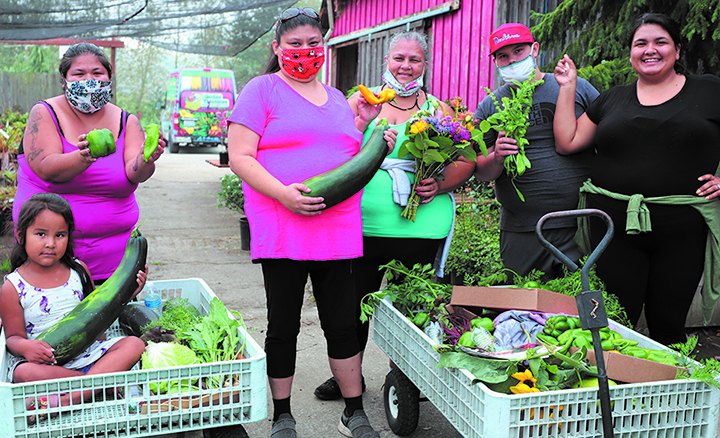
One such participant was Lummi elder Anita Rutherford. She shared that she’s attended every Garden Treasures u-pick day hosted by the Diabetes Care and Prevention Program thus far and looks forward to attending the final two on September 30 and October 17 as well.
“I’ve been a member of the diabetes program ran by Roni since the beginning, some 5 or 6 years now, and I’m happy to say my diabetes is under control because of this program’s guidance,” shared Anita. “They’ve taught me how to properly monitor my blood sugar level and how to view food as my best form of medicine.”
The quest for optimal health and wellness begins with discovering a vibrant lifestyle based on nature’s gifts. Whether it be eating more fruits and vegetables in every day meals or crafting traditional medicines with locally grown flowers and herbs, the power of plants is undisputed.

Beautifully designed and expanded main casino set to open in early 2021
TULALIP, WA – The new Quil Ceda Creek Casino’s big lineup of gaming options will include the debut of new table games and 50% more gaming machines when it opens in early 2021.
More than twice the size of the current property, the new 126,700 square-foot casino will boost gaming excitement with three new table games (for a total of 16) and the addition of 500 gaming machines – bringing the total to 1,500. The new Quil Ceda Creek Casino and multi-story garage is situated on 15 acres of Tulalip Tribal land located directly off I-5 exit 199.
Two brand new titles coming to the gaming floor are “EZ Baccarat” – a fast, easy-to-play game following the same game play format as baccarat, and Craps with Fire Bet. Spanish 21 Progressive and i-Roulette, an electronic chipless version of Roulette, will also go live, joining Double Deck Blackjack, Roulette, Free Bet Blackjack, Fortune Pai-Gow Progressive and Ultimate Texas Hold’m Progressive.
Expanded gaming offerings at the new casino will be complemented with new casual dining experiences, including made-to-order menu selections at “The Kitchen,” an innovative food hall concept, and an exciting a la carte dining experience at “The Landing.” The new casino will include an expanded entertainment lounge and three full-service bars serving craft cocktails, regional beers, Northwest wines and appetizers.
The current Quil Ceda Creek Casino facility will remain fully operational until the new casino opens to the public in early 2021. More information on the new Quil Ceda Creek Casino and a livestream look at construction can be found at quilcedacreekcasino.com/NewQCCCasino.
By Micheal Rios, Tulalip News

“As Native people, we are born into politics. Our ancestors fought and died, not only for our survival, but also to determine how our people would live generations into the future. As tribal members, you have rights defined by the treaties that your chiefs negotiated with the federal government,” stated Larry Cordier (Lakota), tribal organizer for Washington State Democrats.
“In recent years, Washington tribes have had a resurgence of culture and tradition. The return of the canoe journey, language, and food sovereignty are examples of the priorities the tribal councils have placed in determining the future of their Nations,” he continued. “That work must continue. We are working hard to elect candidates and partners who support tribal sovereignty and self-determination.”
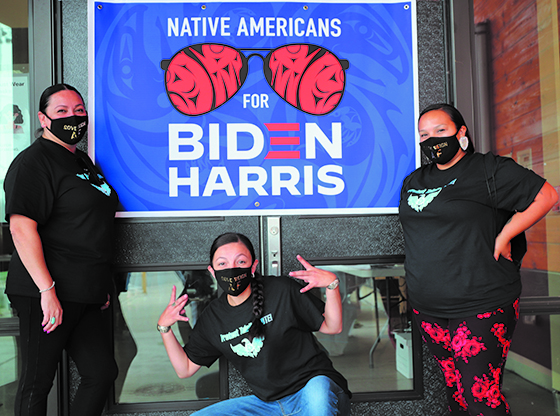
Larry’s words rang out at the Don Hatch Youth Center on Friday, September 18, during a Democrat-sponsored, ‘Get Out the Native Vote’ community event. The mission was to make it as convenient as possible for non-registered, eligible Tulalip voters to get registered to vote in the upcoming presidential election.
Such was the case with Tulalip tribal member Jaydin Thompson Sheldon who turned 18-years-old this past summer. Becoming a full-fledged U.S. adult citizen right before a presidential election was not lost on the Marysville-Getchell graduate, as she expressed a sense of perspective few her age rarely do.
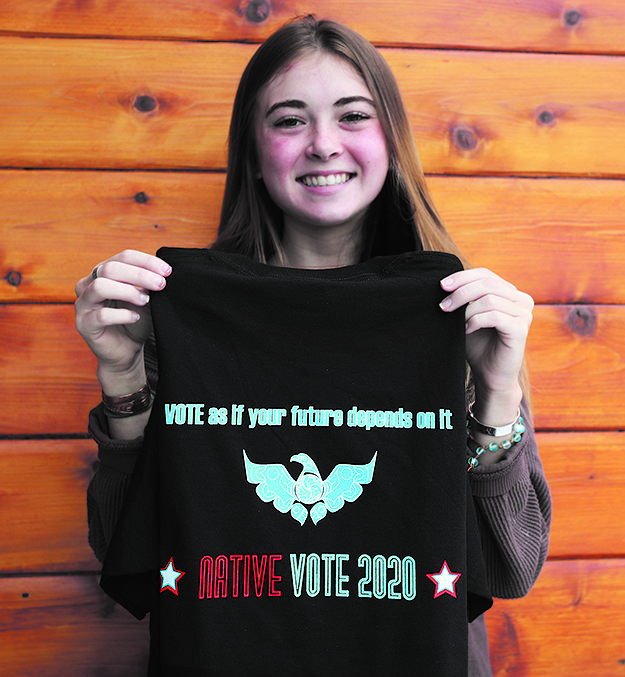
“It was important to me to get registered today so I can have a say in elections. Not just for president, but local and state elections, too,” reflected an optimistic Jaydin moments after registering to vote and collecting a stylish Native Vote 2020 t-shirt. “It’s become a trending topic with my friends on social media, so I’m hopeful a lot of people my age will vote. Because I’m new to politics there is a lot of research I need to do to determine which candidates reflect my values.”
While voters like Jaydin aren’t willing to commit to either major party or their high profiled candidates, there is a growing consensus from Tulalip leadership that a Biden/Harris ticket is the only way to go in order to protect treaty rights and strengthen tribal sovereignty.
Married couple Lavinia and George Contraro expressed something similar to the ‘blue no matter who’ mantra because they feel the current president doesn’t deserve a second term.
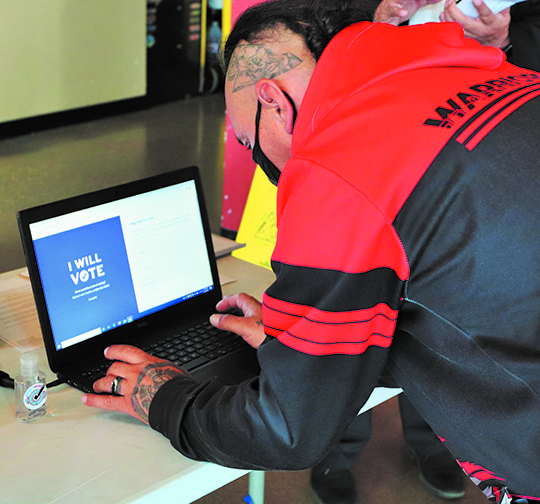
“It’s been a while since I’ve voted,” shared George. Event staff assisted him filling out the necessary forms so that he can come out of voter hibernation and cast a ballot come Election Day. “It’s important I vote now because we need Trump gone.”
“It’s only common sense. Everyone has to vote for Biden if we’re going to get Trump out of office,” added his wife, Lavinia. She was able to check her voter registration and get it updated with her current address.
Concluding the afternoon event, staff noted they successfully assisted 14 tribal members get registered to vote.
“This is a huge success. If we got only one person registered it would have been a success, and to get fourteen is just that much more significant,” said Board of Director Misty Napeahi. “Hopefully, everyone we got registered today will talk to other people they know who aren’t registered and let them know how easy the process is.
“This election may be the most important election of our lifetime!” she continued. “Historically, we’ve been told our vote doesn’t matter because that’s how Republicans win elections, though voter suppression. When we the people get out and vote, Democrats win. That’s why it is so important that this election every Native vote be counted.”
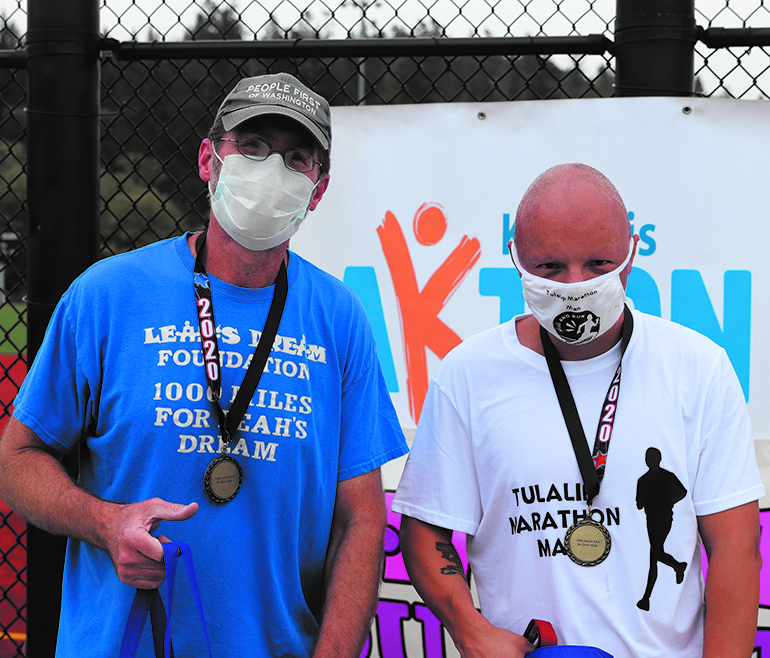
By Kalvin Valdillez, Tulalip News
“Nobody in my family was a runner,” said Tulalip tribal member, Tyler Fryberg. “But once I was able to run my first three miles without stopping, that got me excited and I kept on running ever since.”
Tyler’s passion for running began during a big change in his life, when making the transition from middle school to high school. Knowing he wanted to participate in school sports, he signed up for cross country and track & field during his freshman year at Lake Stevens High School. He continued competing in both sports his sophomore year before transferring to Monroe High School where he completed his school career.
“When I left Lake Stevens and moved to Monroe, where I graduated, it was all new,” he said. “I started there my 11th grade year and I did both cross country and track. I didn’t make varsity for cross country my first year there, but I did for track & field. After my 11th grade year, I end up lettering in both sports during my senior year. That was my goal I had all along, even with knowing I had a disability and that it was going to be a lot harder than the normal person.”
After lettering in cross country as well as track & field, and also receiving his diploma, Tyler set new goals to crush and kept lacing up his running sneakers every single day to begin training for the Special Olympics. Due to his hard work, Tyler medaled nearly every year he competed at the Special Olympics and even carried the Special Olympics Torch of Hope for 18 miles in 2012.
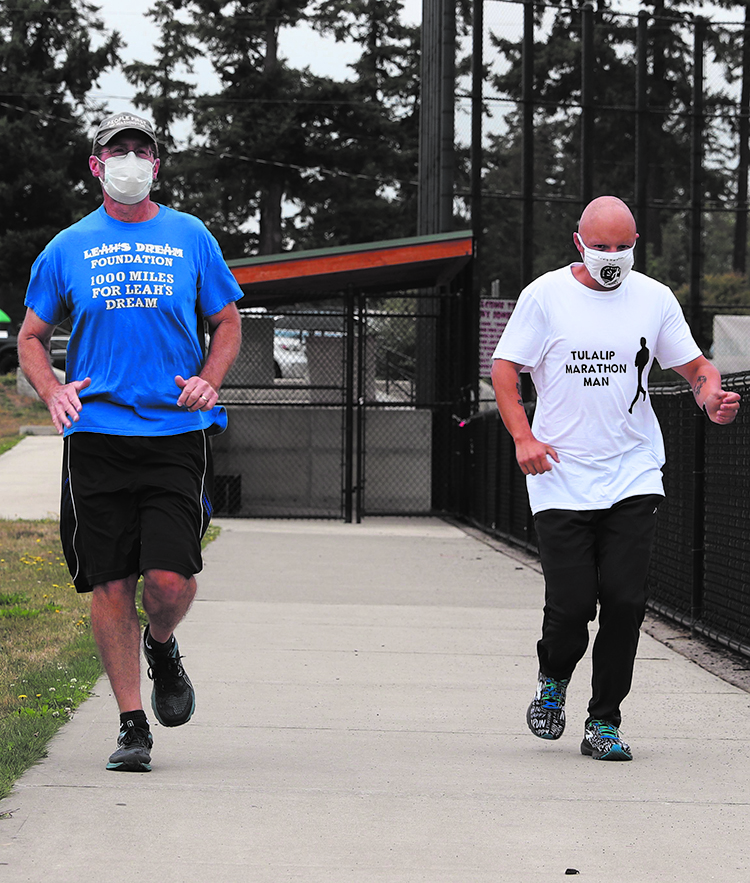
Now age 28, Tyler has run for over half of his life, with the exception of a one-year hiatus due to an injury, “that really got me thinking about my body, taking care of it better so I can run longer,” he expressed.
With countless miles under his belt and several accolades to show for his love of running, Tyler is constantly looking for new challenges, new opportunities to push his limits and exceed his own personal goals. When he learned about a former teacher, Jim Strickland, partnering with Tulalip-based non-profit, Leah’s Dream Foundation, to help raise money and promote awareness for children with disabilities, it was the perfect match.
“I was already involved with Leah’s Dream,” he stated. “So, when they decided to make the Miracle Mile Challenge, I said right away that I definitely wanted to be a part of it. When I signed-up, there was a lot of different miles you can choose from. For me, I like to make big goals so I picked 1,000 miles. That journey started January 1st and was supposed to end on December 31st, but I actually finished my 999th mile a couple weeks ago.”
Finishing months in advance, Tyler ran between 3.5–5 miles for six days every week of the year, making sure to take a rest day to recover and prepare for the upcoming week. On top of the Miracle Mile challenge, Tyler has competed in Special Olympic events such as virtual races, that are held online due to the COVID-19 pandemic. Tyler also created a Facebook page to keep his fans and supporters updated during the challenge and his upcoming running endeavors.
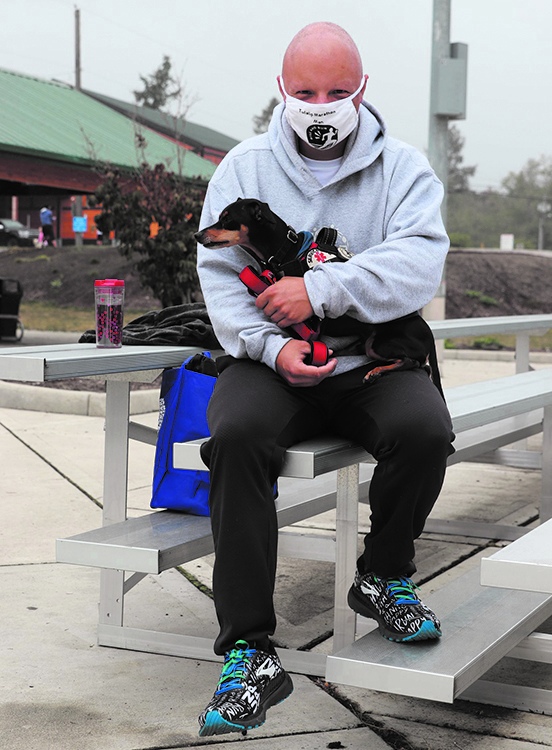
“Somedays I feel motivated, and there are times I don’t feel like running at all,” Tyler admitted. “But this challenge is for Leah’s Dream and knowing that, it gave me motivation to run every day and it was actually something I looked forward to and was excited to do.”
Leah’s Dream Foundation was established in 2015 with one major objective in mind, inclusion. The foundation was started by Deanna Sheldon and family when her daughter, Leah, was diagnosed with autism. The profits that the foundation raises go towards parties, gifts and activity packages for children and young adults living with autism and special needs, to help build a sense of community amongst the youth and their families. Some of their most popular events include the Leah’s Dream Foundation Annual Golf Tournament and the summertime Special Needs Field Day, complete with bouncy castles and a BBQ.
“Before the pandemic, we used to host community events where families all across our community would come together,” Deanna explained. “It was always a free event; we had food, arts and crafts, activities, and events. Last year around this time, Mr. Strickland said he wanted to raise money by running 1,000 miles in one year, and wanted to offer people the chance to do it with him. He’s a runner and is so inspirational.”
Added Amy Sheldon, Leah’s Dream Board Member and Deanna’s sister, “Mr. Strickland was actually Kelsey’s teacher. Kelsey’s my daughter, she’s 24 years old and has autism. He is the one teacher that she had a lot of comfort in, she only had two that she really liked in high school and he was one of those. He would think outside of the box to help her. He’s an inspiration and goes above and beyond for our community.”
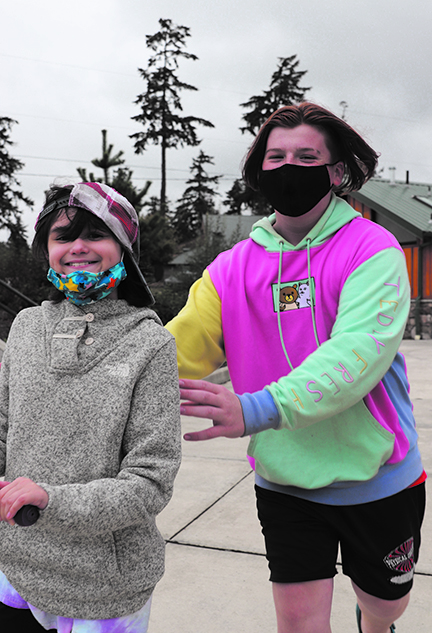
Jim Strickland is an instructor at Marysville Getchell High School and has worked throughout the Marysville School District, assisting young adults with developmental disabilities transition to a life outside of high school.
“I’ve worked with people with disabilities my entire career,” Jim said. “I teach the transition program at Marysville Getchell High School, helping people with disabilities transition from school to active roles in their community. I always had a passion for creating a community that was truly inclusive so that everybody has a place, is valued and is able to share their skills and abilities, whatever they might be. That’s my dream come true, and this played right into it. Leah’s Dream is really about that.”
He continued, “We were looking at a way to raise awareness for Leah’s Dream Foundation and to also raise funds. A lot of my students have been the beneficiaries of the projects that [Leah’s Dream Foundation] has done here in the community. Since Tyler and I both like running, we decided to do a running challenge and I set my sights high for 1,000 miles. Of course, Tyler’s an animal and he’s got other races he’s involved with, so his running went really fast. I had to pick up the pace. Turns out we were able to finish 999 miles sooner than we expected, so we wanted to have a celebratory last-mile-run together and hopefully put the word out and get some more contributions for Leah’s Dream.”
On the afternoon of September 19, upwards of forty people gathered at the Tulalip Sports Complex, located outside of the Tulalip Youth Center. The two participants readied themselves in a running position and the crowd began to count them down. At 1:00 p.m. on the dot, Tyler and Jim took off and began their final mile side-by-side.
A young man practicing drills on the football field with his family learned about what was happening and immediately began jumping up and down, cheering on the runners, especially Tyler. The young man was so excited, he left his family during the middle of his training session and took a lap around the complex, hooting and hollering for the cause the entire way. Other friends of Tyler and Jim also joined in on the celebration, participating in the midday exercise by walking or running a few yards behind the 1,000 mile-dashers, including Leah herself who took her scooter for a spin along the track.
A big motivator for Tyler is when people recognize him while he is out running on Totem Beach Road. In fact, Tyler is known by many for his passion of running and has earned himself the nickname of the ‘Tulalip Marathon Man’ for the many years he dedicated to his sport. And of course, like almost every athlete will tell you, it’s all about the gear and looking stylish while you do your thing. After many years of trial and error, Tyler has found the perfect running shoe to withstand all the miles he tracks.
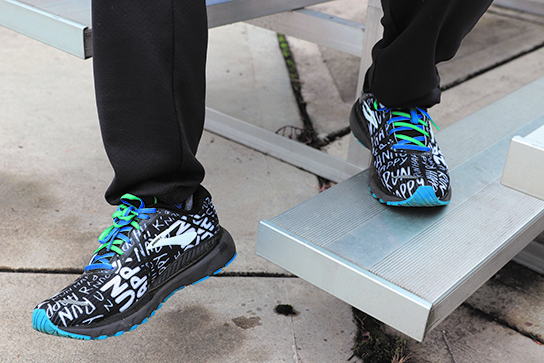
“These are them, the new ones,” he exclaimed while showcasing his kicks. “Everyone’s got to see the shoes. I like to wear Brooks because it’s the only shoe I found to help me be successful as a runner. They are the most comfortable – and I’ve tried all the brands.”
In addition to his fly feet apparel, Tyler unveiled his own personal brand during the Miracle Mile event. While making his strides towards his final mile, Tyler proudly displayed his new merch for all to see; a t-shirt, water bottle and a mask with his alias, ‘Tulalip Marathon Man’, in large text next to a silhouetted-logo of himself running.
“Running is important to me because it’s something I enjoy doing,” Tyler expressed. “I think it motivates people to start exercising in general. When people see me on the side of the road, it brings me motivation and excitement and it’s actually really cool when it happens in your own community. It makes me feel good and it’s really important to me. My advice to new runners is find something that motivates you to run and don’t push yourself too hard, you have to take it easy at first when you are learning how to run. Take it one mile and one day at a time, and remember that anything is possible.”
With 1,000 miles in the books and smoke-free weather, Tyler is ready to get back on his grind and is already conjuring up his next personal goal. The partnership with Leah’s Dream helped raise over $1,200.00 and the non-profit is still accepting pledges for the runners, although the event finished earlier than anticipated. The foundation will now focus their efforts on creating a magical Christmas for their children and community, assembling gift-care packages that will be hand-delivered to their homes by none other than Santa Clause.
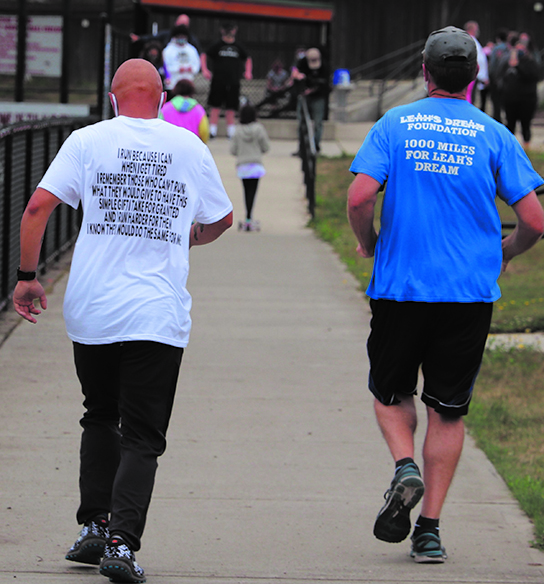
“We want our families to know that we’re here, we care and we just generally want us all to be together again,” Deanna said. “We’re all within a community, we are all one and united, it doesn’t matter what disability or non-disability you have. Creating an inclusive environment is one of the biggest things we want, love and strive for.”
For more information about Leah’s Dream Foundation and the Tulalip Marathon Man, be sure to follow their journey on their respective Facebook pages.
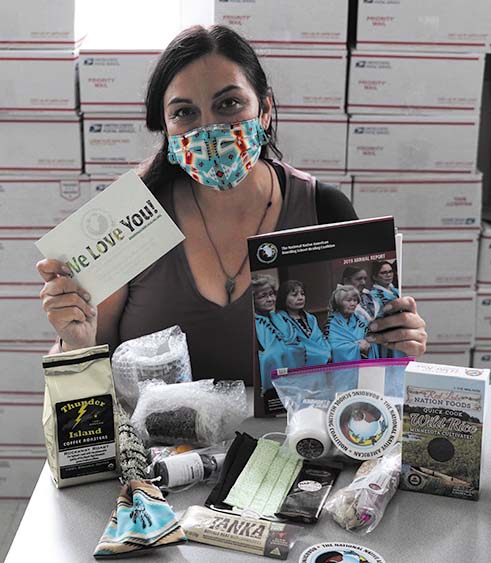
By Kalvin Valdillez, Tulalip News
“The government tried to change us, tried to kill the Indian to save the man,” said Deborah Parker, Tulalip tribal member. “We can’t take back those days, but today we can find that healing and let our elders know that they do mean a lot to us. We want them to know that we want to listen, we want to care for you and want to shower you with as much love and respect that others didn’t show you.”
Deborah reflected on the past five months in the cafeteria of the Tulalip Boys and Girls Club, which has served as her primary work station for the care package project. With a mountain of white USPS boxes behind her, she explained what one might expect upon opening one of the many boxes that were stacked neatly and nearly to the ceiling.
“1,000 boxes, that’s the ambitious goal,” she laughed. “We were trying to figure out what these boxes would be called and the words we came up with were just, ‘We Love You’. We want people to feel loved. Sometimes people go through life not knowing that someone loves them. The boarding schools made sure that our kids didn’t feel loved for who they were, who they are as Native Americans.”
Deborah of course needs no introduction, she is known nationwide for her work in Native America, using her voice for a number of causes, namely the Violence Against Women Act (VAWA). She was also handpicked to serve on the platform committee for Bernie Sanders during the 2016 Presidential Election. And just as important, Deborah has held a number of leadership positions locally for both the Tulalip Tribes and the Marysville School District. Her work extends beyond the US borders as well, working for the Tsleil-Waututh First Nation in Canada as the Director of the Residential Healing School early in her career, making her passion for providing healing for boarding and residential school survivors a lifetime commitment.
Last Fall, Deborah helped organize the 2nd Annual Boarding School Healing Conference at the Tulalip Resort Casino. The conference was hosted by NAB, or the National Native American Boarding School Healing Coalition, a non-profit founded in 2012 whose mission is to bring out the true history of boarding schools in America and residential schools in Canada, as it is often glossed over in textbooks, if mentioned at all.
“Our Native children were often put in schools and many never returned,” she explained. “We are currently fighting at the United Nations to bring back justice for the children and families who never returned home from the boarding schools.”
Assimilation brought on years of terror and abuse for Native children all across America. 367 boarding schools were established throughout the country in total, with 13 based in the state of Washington, including the Tulalip Indian School. The atrocities that occurred at the boarding schools in turn had a trickledown effect throughout the generations. Today, although several generations removed from the boarding school experience, the children, grandchildren and great-grandchildren of boarding school survivors are dealing with the aftereffects of the abuse that took place at the schools, trying to break the cycle of generational trauma that often appears as alcoholism and substance abuse, suicide, depression, poor diets, and domestic violence that stems from neglect, maltreatment and loss of identity caused by forced assimilation at the boarding schools.
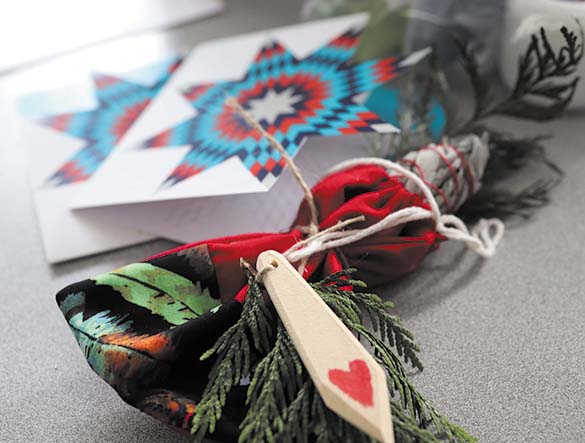
Although Deborah doesn’t have an official position with NAB, due to her personal connections and the desire to see residential school victims begin their healing process, she has been very involved with the non-profit’s recent activities, often volunteering to lend her voice, expertise and a helping hand whenever and wherever needed.
She said, “Back when COVID first hit, I asked who’s taking care of our elders? We just had a conference here at Tulalip and I met a lot of the elders and people who are just trying to process. I was concerned for them and their wellbeing. NAB had some funding that would’ve went to another conference, and since they didn’t spend the money, I started looking at products online for care packages. I started looking at how I could buy Indigenous.”
Taking it upon herself, Deborah began researching Native-owned businesses, compiling a wish list of products and companies she hoped to collaborate with. She reached out to these companies to gauge their interest in working together and their capability to fulfill large order requests during the coronavirus, many of whom were facing hard times as a result of the pandemic. In fact, many companies actually expressed that her business helped them immensely during this time of unknown.
“I realized that there are a lot of Native entrepreneurs and businesses that were really struggling, so I thought what a good partnership if we could send some of their beautiful items to the elders in need. This was a vision of creating a win-win situation between everyone involved, including NAB having the budget to support this effort.”

The next step, after purchasing products made by Indigenous creators from all across the country, was assembling the boxes. Knowing she could rely on her community, Deborah put out a call on Facebook and the volunteers showed up. Over the summer, community members of all ages leant a hand in putting together the care packages at the Boys & Girls Club, including Club members and staff.
“It’s been pretty fun, having the kids participate,” said Club Director, Mark Hatch. “Some of the basketball team kids come here and donate their time on the weekends and that’s pretty impressive. I think it’s really important work that Debbie and her team is doing.”
Tribal member Misty Flores and her kids have been volunteering their time to the care package project since the very beginning.
“We love working here,” Misty stated. “To be able to participate in this experience and help the elders is a once in a lifetime experience for us. In the last year I learned more about the boarding schools and what happened during those times. It’s really nice to be able to be a part of something so special and do something heartfelt for those people who had horrible things happen to them.”
Skylar Flores said, “It was a new exciting challenge to complete and it felt nice to help the elders who survived the boarding schools.”
Although she admits that curating each box requires more attention than she originally anticipated, Deborah expressed an extreme amount of gratitude for the volunteers and was beyond ecstatic when showcasing the contents of each box, noting that each package will be unique, as well as a surprise to the recipient.
“A lot of the products were harvested just for this and are sustainable,” Deborah said. “We have medicine bags that were handmade by Threads of Love, who went completely above and beyond to make every medicine bag special. The Native Wellness Institute sent us Native Wellness coloring books. We have the Three Sister seed-blend, from the Native American Agriculture Fund and the Flower Hill Institute. They sent us two cases of corn, beans and pumpkin seeds for elders to plant, and they also donated money to help us send the boxes out. The Native American Finance Officer Association, NAFOA, donated 1,000 chocolate bars that are from the Chickasaw Nation. It’s a really fine, delicious chocolate.”
She continued, “We purchased coffee from four different Native American Coffee Companies, so most of the boxes will have coffee. We have wild rice from Red Lake; Organic Huckleberry Jam by Rose’s Native Design from the Yakama Nation. From the Quinault Nation, Titus Capoeman and [Tootie James] made 1,000 Devil’s Club Salves and we have SovereigNDN Tea made by Jean Ramos. Amy Anderson (Tulalip) does the Salish Soaps. Puyallup donated 1,000 cedar roses, necklaces and beaded items. We have sweet grass lip balm, blackberry sage and sequoia candles. 1,000 paddle pendants handmade by a Chehalis tribal member and Cecily George painted hearts on each paddle.”
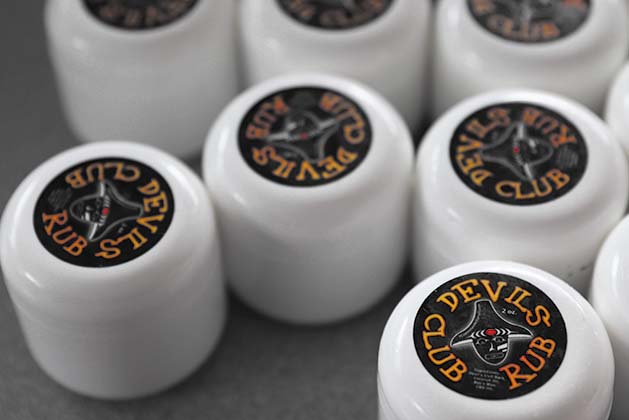
Deborah stated that although it was important to order locally, she also wanted to include items from as many sovereign nations that she could, including tribes based in Alaska, Oklahoma, Piute, South Dakota and New Mexico. Tulalip tribal member Sarah Hart, was called upon to add her contributions to the project. Sarah is known by the local community to carry sage and perform blessings and cleansings for people prior to gatherings and events. Sarah provided her potent, homemade hand sanitizer for the care packages, as well as sage that she journeyed to California to harvest.
“To know where the boxes are going touches your heart in such an unexplainable way,” Sarah said. “I have heard stories my whole life from elders, my grandma and family about boarding schools and the horror stories. To be a part of this is a real honor, to give them a little bit of medicine and remind them that we love them and without them, we wouldn’t be who we are today. They have sacrificed the ultimate pain and we owe them our prayers and love. It was emotional for me to have some of our youth [assemble care packages], including my son. Deborah explained, when the first boxes were made, what they were and what that meant. At the moment, everyone felt so much emotion in that room. To know my sanitizer and the medicine will go to a boarding school survivor is the ultimate honor.”
Deborah and her family also did a bit of harvesting of their own for this occasion, and out of their harvest they created a medicinal spray that helps ease tension and anxiety.
“One is sage, cedar, sweet orange and lavender, it’s called medicine bundle,” Deborah explained. “It took about a week of harvesting and distilling. We had Misty, her children, Colette from Northwest Indian College, and the [Boys & Girls Club’s] boys’ basketball team help with filling the bottles. We probably have about 600 bottles done. It took one whole day just to put the fluid in the bottles, cut the sticker and put them on the bottle and in a bag so they’re ready to go.”
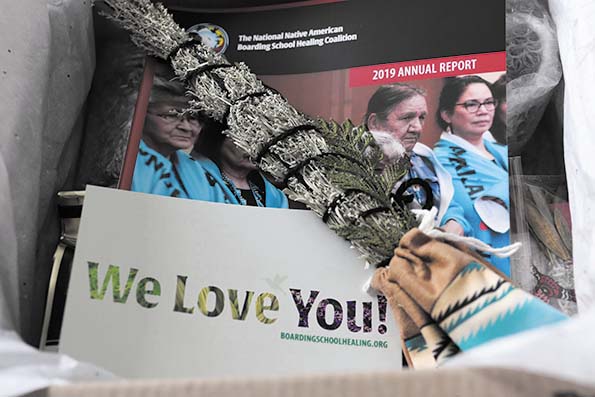
Although the grand total of care packages is 1,000, Deborah and the group of volunteers will be shipping out 150 boxes at a time. In addition to the items Deborah listed, the boxes may also include N95 or cloth masks, Red Corn Frybread dough, Eighth Generation socks, Native Wellness Life Magazines, and a We Love You card with instructions for the elders on how to share photos of their care packages on their social media, and additional information about the real history of boarding schools in North America.
“Starting this project was just a labor of love,” Deborah expressed. “It meant a lot to me for the elders to know that we care about them. Some of these ideas may seem off the wall like, ‘you’re just buying products, what does that have to do with Native people?’ It’s our survival, it’s our commerce, it’s how we take care of our elders. Because our families were separated, our children were removed, taking care of each other has been a challenge at times. We lost many of those skillsets that we once had, so getting back to the love, getting back to nurturing, getting back to community is one of our greatest needs in Indian Country.”
If you are looking to volunteer your time or are searching for my details, please contact Deborah Parker via Facebook or visit www.BoardingSchoolHealing.org